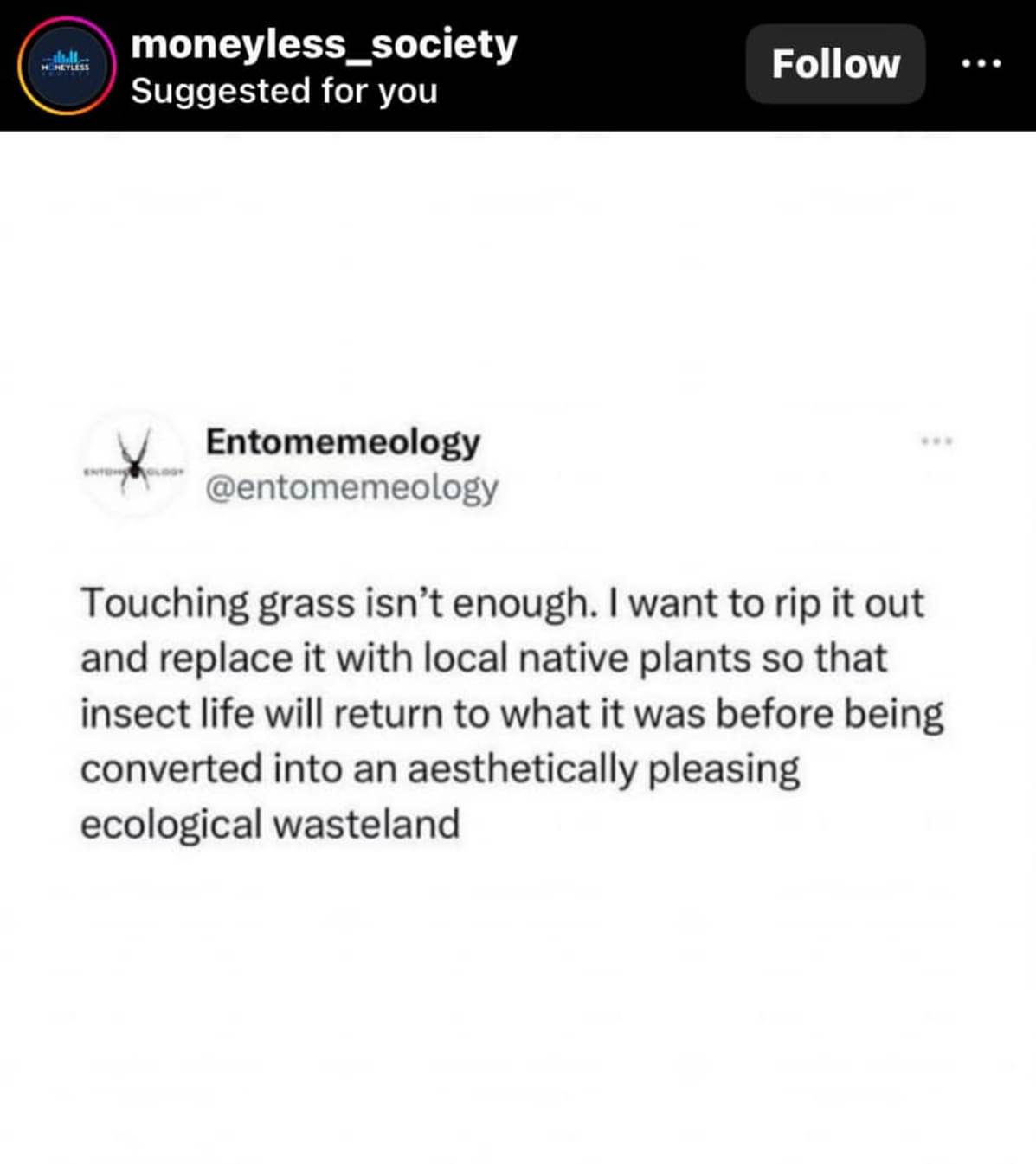this post was submitted on 23 May 2024
794 points (96.6% liked)
Science Memes
10923 readers
2681 users here now
Welcome to c/science_memes @ Mander.xyz!
A place for majestic STEMLORD peacocking, as well as memes about the realities of working in a lab.

Rules
- Don't throw mud. Behave like an intellectual and remember the human.
- Keep it rooted (on topic).
- No spam.
- Infographics welcome, get schooled.
This is a science community. We use the Dawkins definition of meme.
Research Committee
Other Mander Communities
Science and Research
Biology and Life Sciences
- [email protected]
- [email protected]
- [email protected]
- [email protected]
- [email protected]
- [email protected]
- [email protected]
- [email protected]
- [email protected]
- [email protected]
- [email protected]
- [email protected]
- [email protected]
- [email protected]
- [email protected]
- [email protected]
- [email protected]
- [email protected]
- [email protected]
- [email protected]
- [email protected]
- [email protected]
- [email protected]
- [email protected]
- !reptiles and [email protected]
Physical Sciences
- [email protected]
- [email protected]
- [email protected]
- [email protected]
- [email protected]
- [email protected]
- [email protected]
- [email protected]
- [email protected]
Humanities and Social Sciences
Practical and Applied Sciences
- !exercise-and [email protected]
- [email protected]
- !self [email protected]
- [email protected]
- [email protected]
- [email protected]
Memes
Miscellaneous
founded 2 years ago
MODERATORS
you are viewing a single comment's thread
view the rest of the comments
view the rest of the comments

It would be easier to just admit you didn't read the whole thing before you shared it. It's a shit study, like I said, and you're wasting your time trying to make it support your opinion.
You can throw more copy pasta at me, if you want, but their results are what they are. I'll reiterate...
Suburban lawns support a diverse bee population: "4.1. Diverse and abundant suburban bee communities. For this study, we documented 93 species of bees collected from the lawn-dominated yards (Appendix A1). These 93 species represent roughly a quarter of bee species recorded in Massachusetts, include 14 Massachusetts county records, and featured the highly abundant Lasioglossum illinoense, a species not recorded in Massachusetts since 1920 (Lerman and Milam, 2016). Other urban bee studies have also amassed impressive species lists (e.g., Baldock et al., 2015; Fetridge et al., 2008; Matteson et al., 2008; Pardee and Philpott, 2014; Tommasi et al., 2004), dispelling the notion that cities are “biological deserts” and support findings that bees can be abundant and diverse in urban settings (Hall et al., 2017). In addition to being primarily native species and soil-nesters, the majority of the Springfield bees were small-bodied (Appendix A1), suggesting that these short-distance fliers took advantage of the floral resources in the study lawns, especially yards mowed every two weeks."
Mowing more frequently was better for the bees: "Mowing frequency altered the evenness of bees within suburban yards, though the patterns we observed did not fully support our hypothesis, in that lawns mowed every week and every three-weeks had higher evenness (Fig. 4d) and richness (Rarefaction curves; Fig. 2) when compared with the two-week treatment."
Mowing more frequently was better for the bees: *"Mowing frequency altered the evenness of bees within suburban yards, though the patterns we observed did not fully support our hypothesis, in that lawns mowed every week and every three-weeks had higher evenness (Fig. 4d) and richness (Rarefaction curves; Fig. 2) when compared with the two-week treatment."
You also ignored the important part where the study pretty explicitly says there are better practices including wilding they just aren't likely to gain acceptance with tedious home owners.